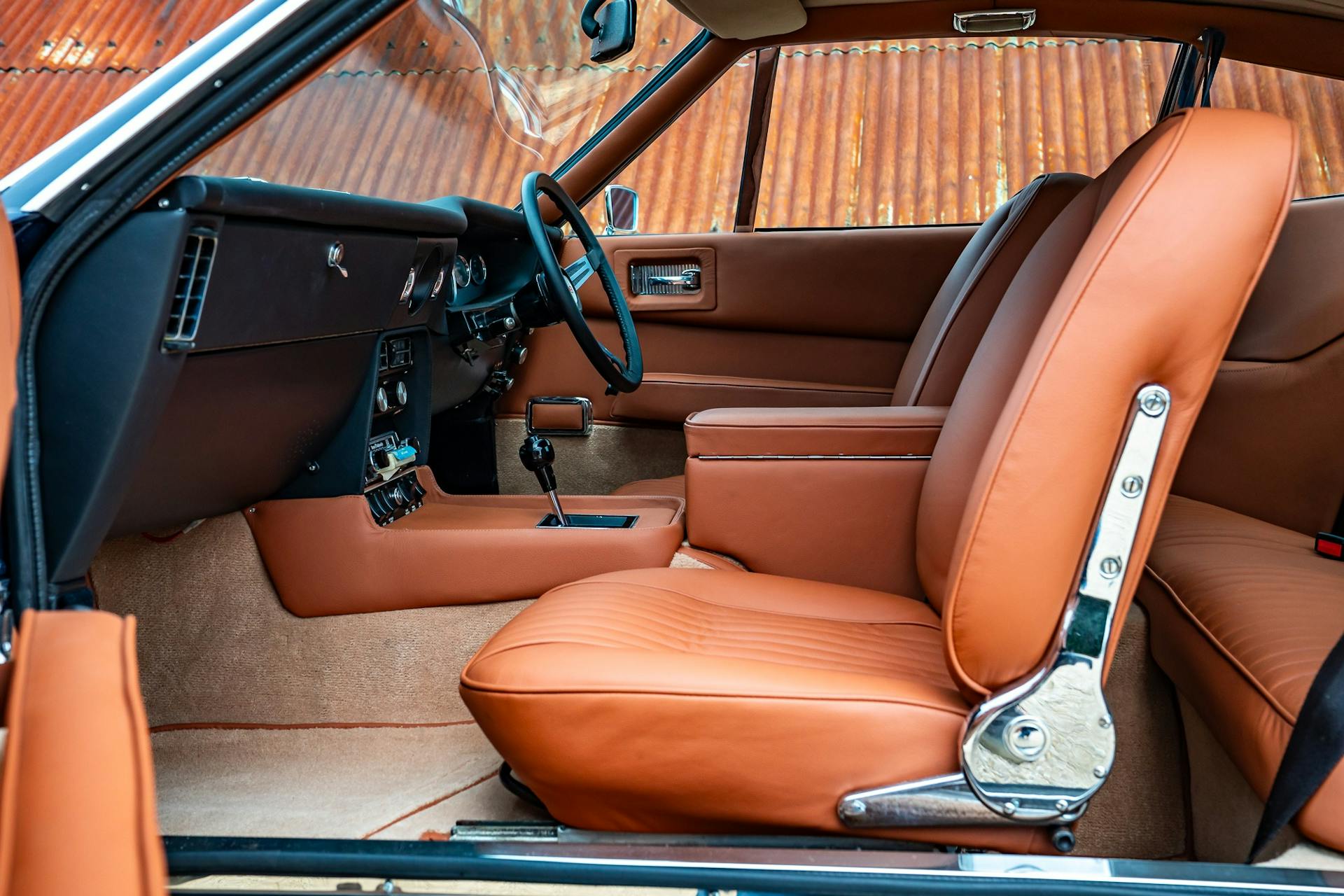1971 Aston Martin DBS

- Recent major restoration by Aston Engineering
- Matching numbers and presented in original Pacific Blue
- Aston Engineering handling kit and telescopic-damper conversion
- Fully retrimmed interior in Autocalf Dark Tan leather
VEHICLE DESCRIPTION
With its combination of a powerful, fuel-injected V8 engine and sharp styling, the Aston Martin DBS is rightly renowned as being one of the finest GT cars of its era, and this particular car is presented in exceptional condition throughout.
Supplied new by HR Owen on 14 October 1971, it was specified with the three-speed automatic transmission, which is perfectly suited to both the torque-rich 5.3-litre engine and the car’s ‘grand touring’ nature. In recent years, the DBS has benefitted from a full restoration by renowned marque specialist Aston Engineering. The process is thoroughly documented in the car’s history file and included extensive work on the body ahead of a bare-metal respray in its original colour of Pacific Blue.
The front and rear suspension was also fully rebuilt, and Aston Engineering fitted its handling-kit upgrade as well as a rear telescopic-damper conversion. The braking system and power steering were overhauled, the differential was rebuilt, and a complete stainless-steel exhaust system was installed.
The finishing touch was a full interior retrim in Autocalf Dark Tan leather with Wilton Sandstorm carpet, and there’s a nice period touch in the shape of a Radiomobile 8-Track player.
Beautifully finished throughout, and featuring well-chosen upgrades that further enhance the driving experience, this matching-numbers Aston Martin DBS is a superb example of this muscular British classic.
MODEL HISTORY
The DBS marked the beginning of a new era for Aston Martin when it was launched in 1967. In-house designer Williams Towns was given the job of coming up with a replacement for the Touring-designed DB6, and he produced a modern, square-edged design that not only set the template for the subsequent V8 models, it also helped to establish the ‘look’ for a big Aston throughout the 1970s and 1980s.
The DBS should have been powered by a V8 engine from day one, but Tadek Marek’s new 5.3-litre unit wasn’t ready in time, so Aston Martin carried over the 4-litre six-cylinder engine from the DB6. It was available in either standard 282bhp SU-carburettor form, or as the 325bhp Vantage, which used Weber carburettors.
Drive was via a ZF five-speed manual gearbox or a three-speed Borg-Warner automatic, and the rear suspension employed a de Dion set-up rather than the DB6’s live axle. As it turned out, the DB6 would remain in production until November 1970.
The DBS V8 joined its six-cylinder sibling in 1969, and the two ran alongside each other until 1972, when the six-cylinder DBS was dropped and the bigger-engined car morphed into the V8. The model also enjoyed starring roles on small and big screen alike, and was used by both Brett Sinclair in The Persuaders and James Bond in On Her Majesty’s Secret Service.
Contemporary road-testers praised the flexibility of the V8 engine, and when Autocar tested a DBS in 1971 it recorded a 0-60mph time of 6.0 seconds and a top speed of over 160mph. The magazine then offered a very simple summary of the Aston Martin’s all-round appeal:‘Tremendous performance, superb brakes, excellent handling.’